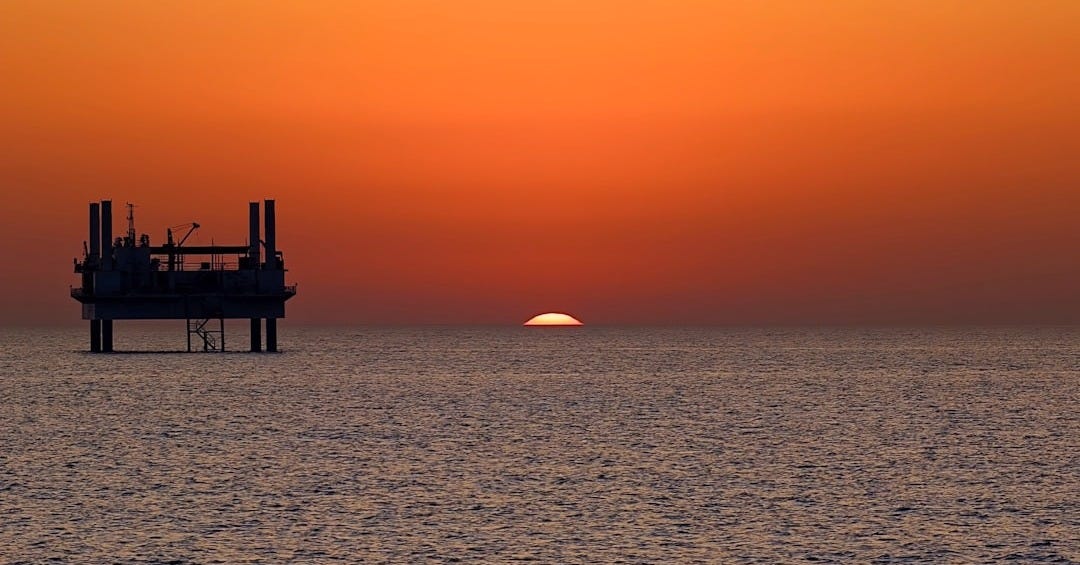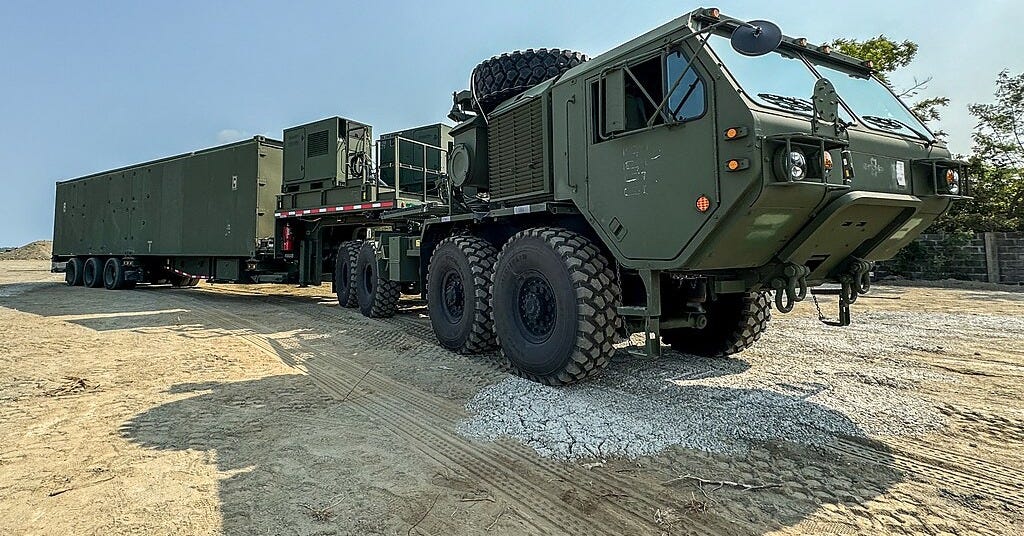From oil fields in South America to missile batteries in Japan
Last week's events revealed how fragile the balance of power has become
The past week underscored a central truth of our era: geography, energy, and security are once again dictating the contours of global politics. The Americas are fast becoming the world’s new energy engine, while NATO fortifies its Baltic frontier against Russian probes. In the Middle East, Israel shattered diplomatic convention with a strike in Doha, even as Turkey redrew the Mediterranean chessboard through Libya. And in Asia, the U.S. introduced a new missile system in Japan, raising the stakes with China.
Taken together, these developments reveal a multipolar world in flux—one where the lines between deterrence and escalation, diplomacy and force, are becoming ever thinner.
Americas: Energy Power Shift
Americas as the New Global Oil Engine
The Americas are emerging as the world’s new hydrocarbon powerhouse. Brazil, Canada, Guyana, and Argentina are driving a surge in oil and gas production that could reshape the global energy map. Brazil’s offshore pre-salt fields continue to outperform expectations, Guyana has quickly vaulted into the ranks of major producers, Canada is expanding pipelines to the Pacific, and Argentina’s Vaca Muerta shale formation is finally unlocking its potential.
At the same time, demand is increasingly concentrated in Asia, where China, India, and Southeast Asia are powering ahead with energy-intensive growth. This evolving pattern means that instead of Middle Eastern cargoes flowing east, it will be the Americas feeding Asia’s appetite for hydrocarbons. The implications are profound: new maritime corridors, fresh dependencies, and the redrawing of strategic choke points.
For Washington, this shift is both a blessing and a challenge. On one hand, North America’s self-sufficiency reduces vulnerability to Middle Eastern disruptions. On the other, it forces the United States to reassess its security commitments abroad, even as its companies and allies profit from new flows. Meanwhile, South American producers are navigating the politics of abundance—balancing environmental pressures, local opposition, and the need for foreign capital.
Our Take: The Americas’ rise as an energy engine marks a turning point in global trade. But it also exposes a thin red line: as oil and gas routes reorient, geopolitical frictions may shift from the Strait of Hormuz to the Panama Canal and Pacific sea lanes.
Europe: NATO’s Eastern Sentry
Fortifying the Baltic Frontier
NATO has moved decisively to reinforce its eastern flank. Following Russian drone incursions into Polish and Baltic airspace, the alliance deployed additional battlegroups and air-defense systems. The moves underscore NATO’s determination to make its Article 5 commitments unmistakably clear: the Baltic frontier is not negotiable.
Image: A Polish tank crew in an M1A2 Abrams tank.
These deployments are part deterrent, part reassurance. For frontline states like Lithuania and Estonia, they are existential guarantees. For Moscow, however, they are a provocation. Russian officials denounce them as “encirclement,” while military analysts warn of an escalating cycle of deployments and counter-deployments. The geography compounds the risk: the Baltic states are NATO’s most vulnerable territory, with the narrow Suwałki Gap linking them to the rest of the alliance.
The West’s show of force recalls earlier moments when hard geography met high tension. Just as Cold War planners obsessed over the Fulda Gap in Germany, today’s NATO strategists must contend with the Baltic corridor. Technology may have changed, but geography has not.
Our Take: NATO’s deterrence posture is necessary, but it sharpens the risk of miscalculation. The thin red line here is whether deterrence strengthens stability—or hardens Moscow’s resolve to test the frontier again.
Middle East: Israel’s Doha Strike
A Gulf Diplomatic Earthquake
In a stunning departure from precedent, Israel carried out an airstrike in Doha targeting Hamas negotiators. The attack shattered Qatar’s long-standing role as a mediator between Islamist factions and the West. Doha, which has often balanced its identity as a U.S. ally with its ties to Hamas and the Muslim Brotherhood, suddenly finds its credibility in tatters.
Image: Israel–Qatar flags by Prachatai, CC BY-NC-ND 2.0.
The regional implications are vast. For decades, Qatar has used its diplomatic clout to punch above its weight, hosting negotiations from Afghanistan to Sudan. Israel’s strike undermines that model, raising doubts about whether Qatar can continue as a trusted broker. It also puts Washington in a bind: the U.S. has relied on Qatari mediation, even as it hosts America’s largest military base in the region.
For Israel, the strike signals a new doctrine—no sanctuary for adversaries, even on friendly soil. For the Gulf, it introduces a destabilizing precedent: disputes once managed through quiet channels may now be resolved through open force. The attack has already unsettled Saudi and Emirati officials, who fear that escalation in Doha could ripple through the Gulf.
Our Take: Israel’s Doha strike has exposed a fragile balance in Gulf diplomacy. The thin red line is whether this moment forces a recalibration of regional norms—or ignites a wider cycle of retaliation and mistrust.
Africa: Turkey–Libya Pact
Migrants, Gas, and the Mediterranean Chessboard
Turkey has deepened its partnership with Libya’s eastern authorities, signing new deals on maritime rights, gas exploration, and infrastructure. The pact extends Ankara’s influence across the Mediterranean, reviving tensions with Greece and the European Union.
Image: El Saharara oil field, Libya by Khatibzadeh, CC BY-SA 3.0.
At the heart of the deal is a contested maritime demarcation that Ankara first pushed in 2019. By aligning with Libyan factions, Turkey is pressing its claims against Greece and Cyprus, hoping to unlock undersea energy reserves. For Europe, this is not only an energy dispute but also a security one: the same pact includes cooperation on migrant flows, raising the specter of Ankara leveraging migration as political pressure.
Libya’s fractured politics make the arrangement even riskier. Turkey’s support for eastern factions runs counter to prior alignments with Tripoli’s government, further complicating an already volatile balance. For Brussels, the stakes are high—energy security, border control, and the credibility of Mediterranean sovereignty.
Our Take: The Turkey–Libya pact illustrates how energy and migration are now weaponized together. The thin red line lies in the Mediterranean’s fragile equilibrium: push too far, and disputes over maps could spill into confrontation at sea.
Asia-Pacific: Missiles in Japan
U.S. Typhon System Raises the Stakes with China
The United States has deployed its new Typhon intermediate-range missile system in Japan, marking a historic escalation in East Asia’s military balance. The system, capable of firing both cruise and ballistic missiles, can reach deep into China’s mainland. Its deployment during joint U.S.-Japan drills signals Washington’s intent to tighten the military noose around Beijing.
Image: A Typhon missile system in the Philippines for the Salaknib 2024 exercise
For Tokyo, hosting the system reflects a profound shift. Long restrained by constitutional pacifism, Japan is now embracing a more assertive defense posture. For Beijing, the Typhon system represents a direct threat to deterrence, one that could neutralize China’s missile advantage in the region.
The move comes amid rising tensions in the Taiwan Strait and the South China Sea. Already, Chinese warships shadow U.S. and Japanese vessels, while air incursions across the Taiwan Strait’s median line have become routine. The arrival of Typhon makes the standoff more brittle: a weapon designed for deterrence could, in a crisis, be perceived as a first-strike capability.
Our Take: The Typhon deployment deepens East Asia’s arms race. The thin red line is whether it serves as a stabilizing deterrent—or tips the region into a cycle where each side fears the other might strike first.





